Shohei Higashiyama
Comprehensive Evaluation on Lexical Normalization: Boundary-Aware Approaches for Unsegmented Languages
May 28, 2025Abstract:Lexical normalization research has sought to tackle the challenge of processing informal expressions in user-generated text, yet the absence of comprehensive evaluations leaves it unclear which methods excel across multiple perspectives. Focusing on unsegmented languages, we make three key contributions: (1) creating a large-scale, multi-domain Japanese normalization dataset, (2) developing normalization methods based on state-of-the-art pretrained models, and (3) conducting experiments across multiple evaluation perspectives. Our experiments show that both encoder-only and decoder-only approaches achieve promising results in both accuracy and efficiency.
Graph-Structured Trajectory Extraction from Travelogues
Oct 22, 2024Abstract:Previous studies on sequence-based extraction of human movement trajectories have an issue of inadequate trajectory representation. Specifically, a pair of locations may not be lined up in a sequence especially when one location includes the other geographically. In this study, we propose a graph representation that retains information on the geographic hierarchy as well as the temporal order of visited locations, and have constructed a benchmark dataset for graph-structured trajectory extraction. The experiments with our baselines have demonstrated that it is possible to accurately predict visited locations and the order among them, but it remains a challenge to predict the hierarchical relations.
Arukikata Travelogue Dataset with Geographic Entity Mention, Coreference, and Link Annotation
May 23, 2023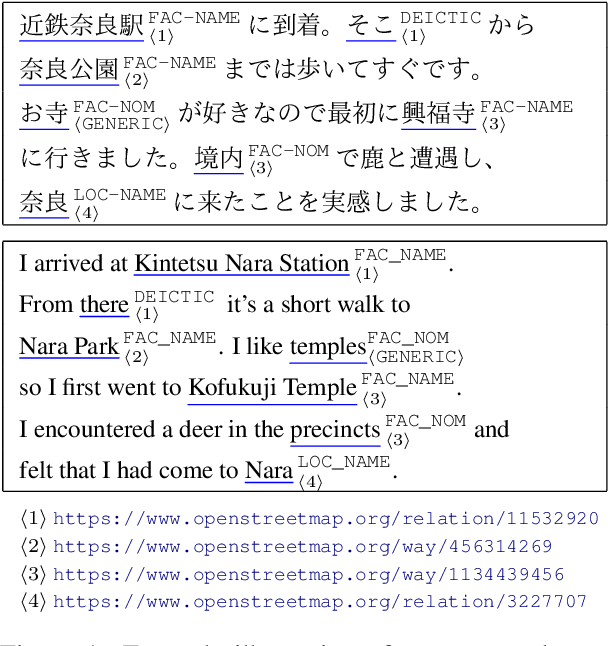

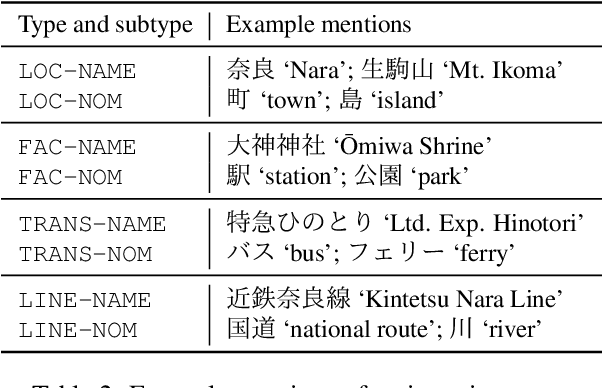

Abstract:Geoparsing is a fundamental technique for analyzing geo-entity information in text. We focus on document-level geoparsing, which considers geographic relatedness among geo-entity mentions, and presents a Japanese travelogue dataset designed for evaluating document-level geoparsing systems. Our dataset comprises 200 travelogue documents with rich geo-entity information: 12,171 mentions, 6,339 coreference clusters, and 2,551 geo-entities linked to geo-database entries.
Arukikata Travelogue Dataset
May 19, 2023Abstract:We have constructed Arukikata Travelogue Dataset and released it free of charge for academic research. This dataset is a Japanese text dataset with a total of over 31 million words, comprising 4,672 Japanese domestic travelogues and 9,607 overseas travelogues. Before providing our dataset, there was a scarcity of widely available travelogue data for research purposes, and each researcher had to prepare their own data. This hinders the replication of existing studies and fair comparative analysis of experimental results. Our dataset enables any researchers to conduct investigation on the same data and to ensure transparency and reproducibility in research. In this paper, we describe the academic significance, characteristics, and prospects of our dataset.
User-Generated Text Corpus for Evaluating Japanese Morphological Analysis and Lexical Normalization
Apr 08, 2021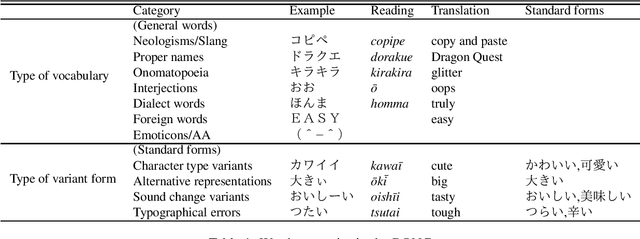
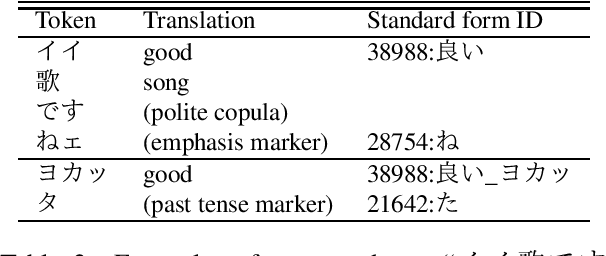
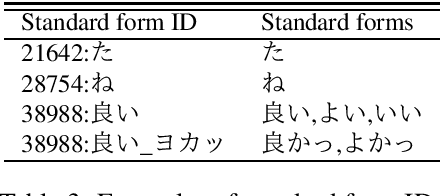

Abstract:Morphological analysis (MA) and lexical normalization (LN) are both important tasks for Japanese user-generated text (UGT). To evaluate and compare different MA/LN systems, we have constructed a publicly available Japanese UGT corpus. Our corpus comprises 929 sentences annotated with morphological and normalization information, along with category information we classified for frequent UGT-specific phenomena. Experiments on the corpus demonstrated the low performance of existing MA/LN methods for non-general words and non-standard forms, indicating that the corpus would be a challenging benchmark for further research on UGT.
 Add to Chrome
Add to Chrome Add to Firefox
Add to Firefox Add to Edge
Add to Edge